The Daily Shot: 15-Feb-24
• The United States
• The United Kingdom
• The Eurozone
• Europe
• Japan
• Australia
• Emerging Markets
• Cryptocurrency
• Commodities
• Energy
• Equities
• Credit
• Global Developments
• Food for Thought
The United States
1. The NFIB small business sentiment index declined last month, …
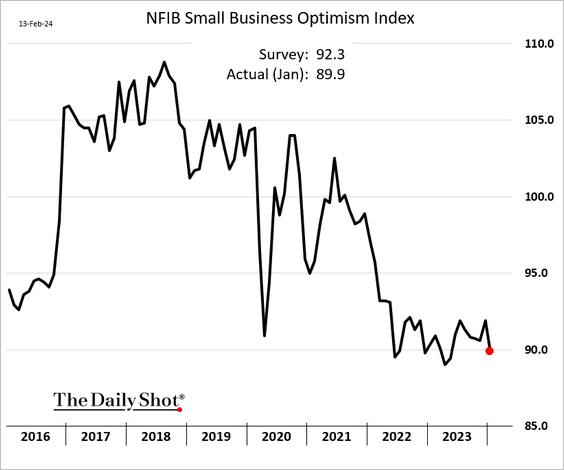
… as sales expectations deteriorated (partially due to frigid weather conditions).
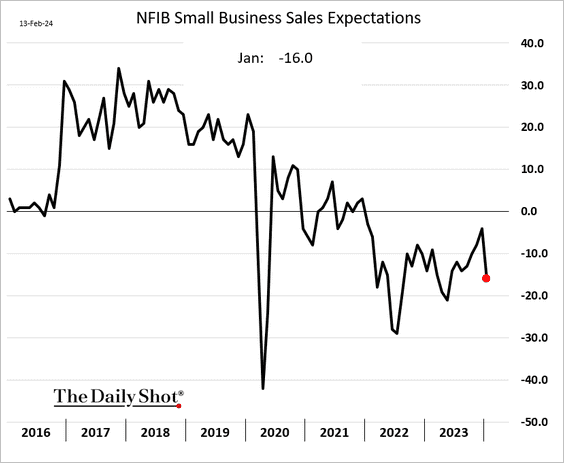
• Hiring continues to slow.
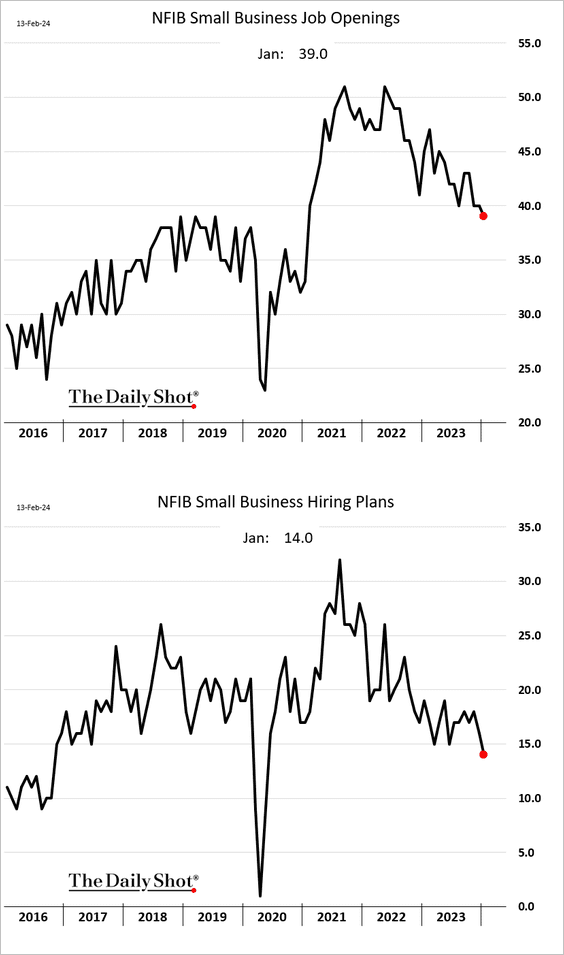
• The index of compensation plans eased.
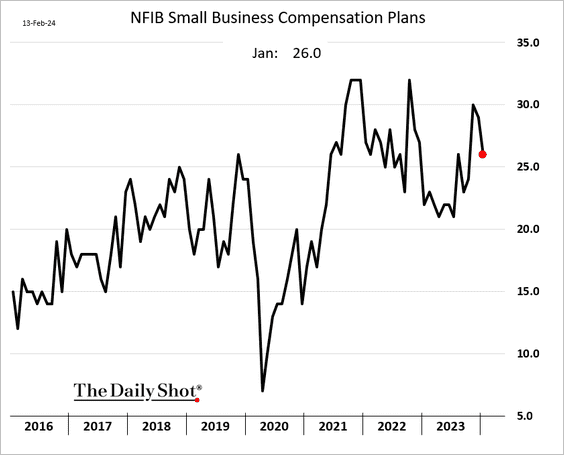
• Fewer businesses are boosting selling prices.
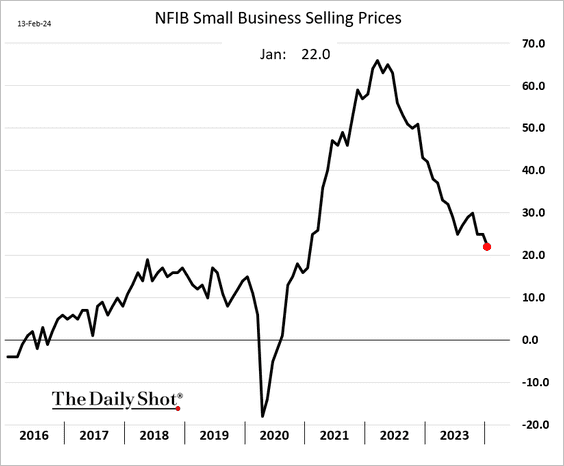
——————–
2. Mortgage rates have been rising.
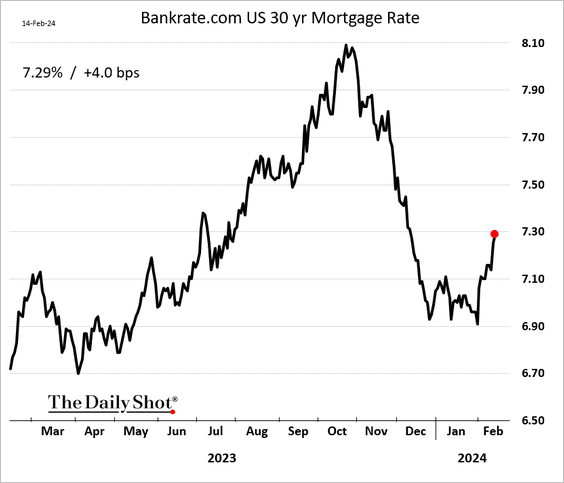
• Mortgage applications are holding at multi-year lows.
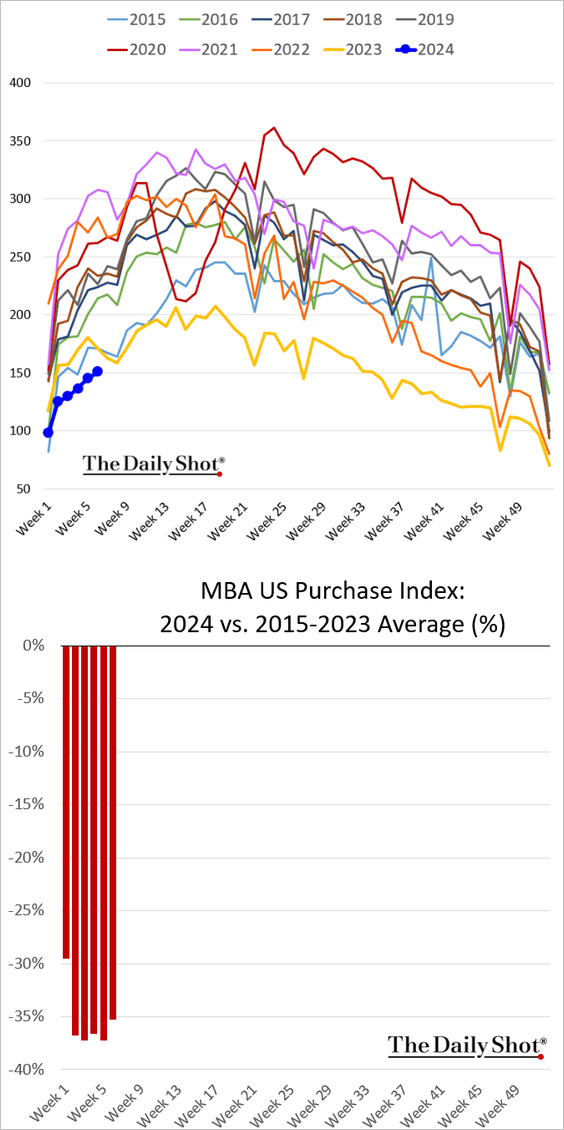
This chart shows the rate lock count.
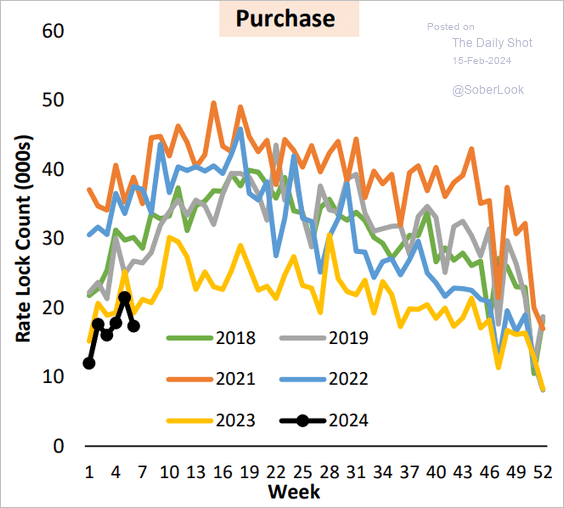 Source: AEI Housing Center
Source: AEI Housing Center
——————–
3. A pullback in retail sales last month?
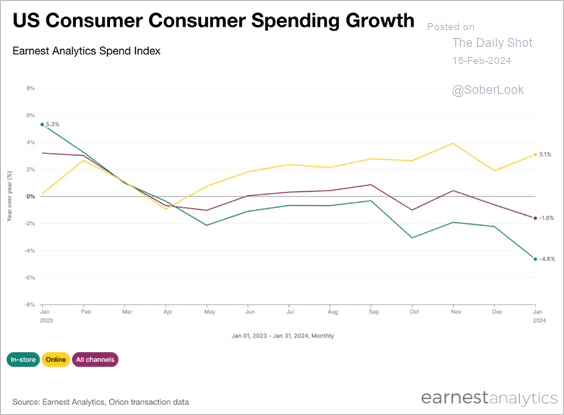 Source: Earnest Insights
Source: Earnest Insights
4. Excess savings remain elevated for high earners.
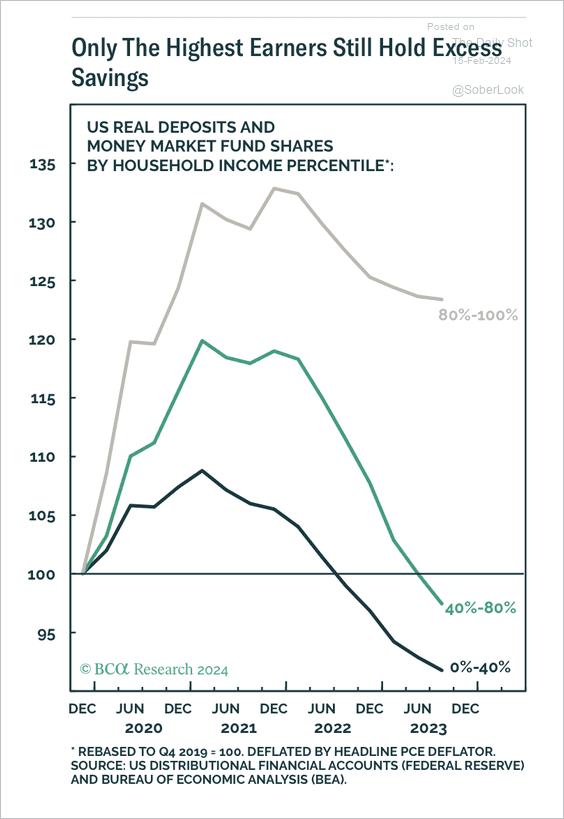 Source: BCA Research
Source: BCA Research
5. Next, we have some updates on the labor market.
• Discussions of layoffs have increased in the latest quarter’s earnings calls.
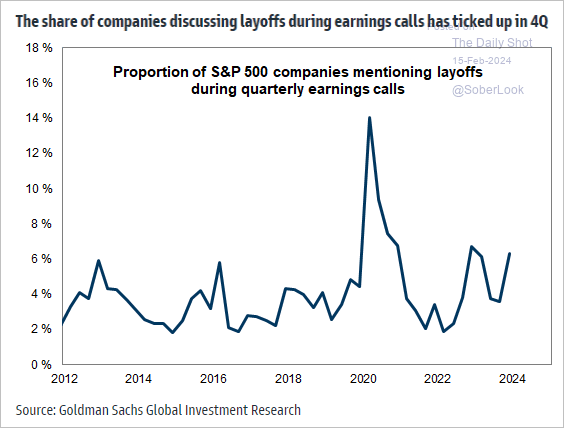 Source: Goldman Sachs; @MikeZaccardi
Source: Goldman Sachs; @MikeZaccardi
• WARN notices signal higher jobless claims ahead (2 charts).
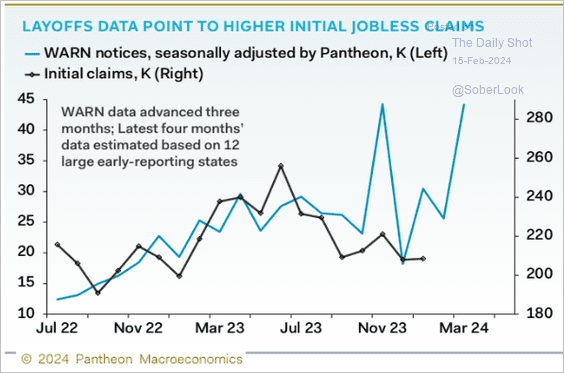 Source: Pantheon Macroeconomics
Source: Pantheon Macroeconomics
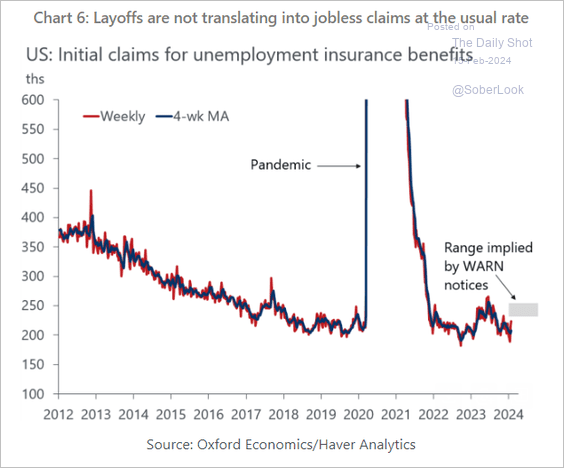 Source: Oxford Economics
Source: Oxford Economics
• Job postings on Indeed are running slightly above 2023 levels.
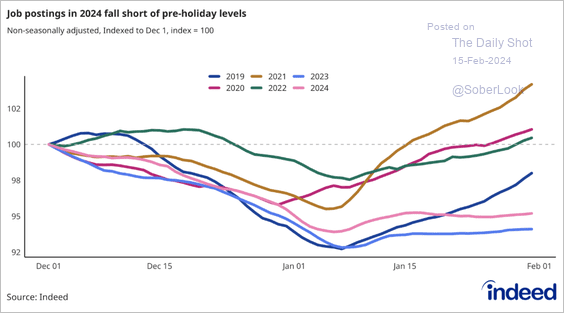 Source: @indeed
Source: @indeed
——————–
6. Leading indicators continue to signal a rebound in US manufacturing activity.
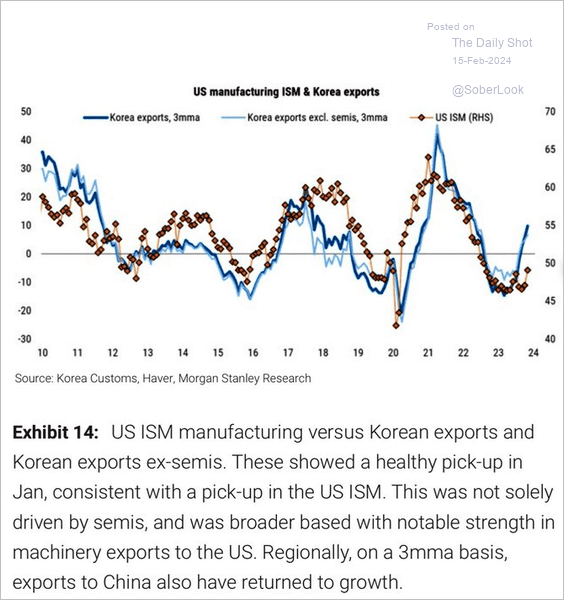 Source: Morgan Stanley Research; @WallStJesus
Source: Morgan Stanley Research; @WallStJesus
7. Companies are still grappling with supply chain issues.
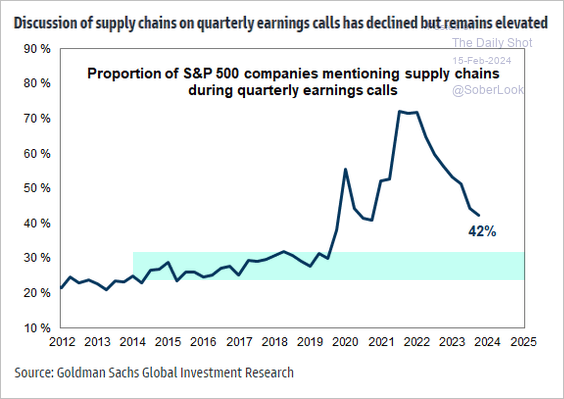 Source: Goldman Sachs; @MikeZaccardi
Source: Goldman Sachs; @MikeZaccardi
Back to Index
The United Kingdom
1. The economy slipped into a technical recession at the end of last year. We will have more on the UK GDP report tomorrow.
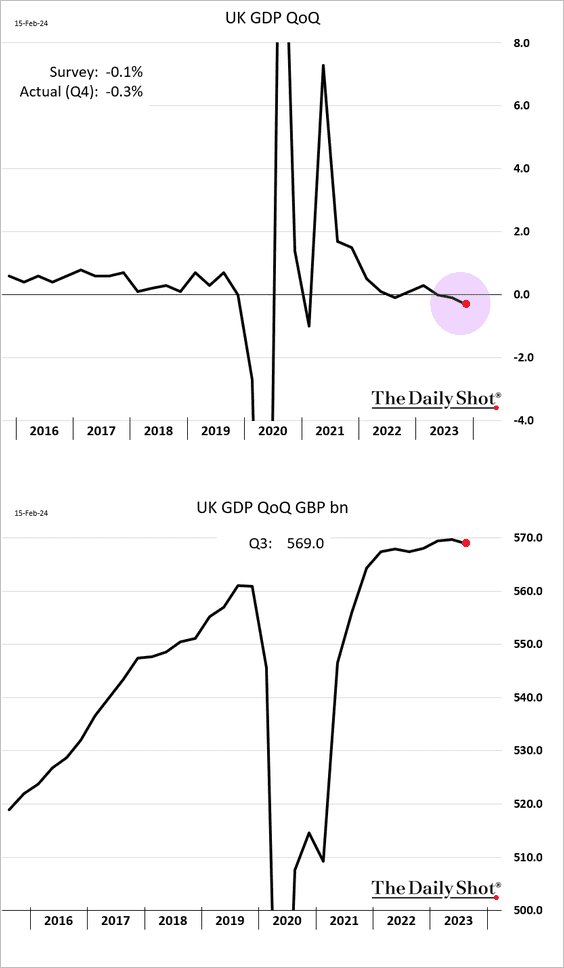
2. On a 3-month basis, inflation is hitting the BoE’s target.
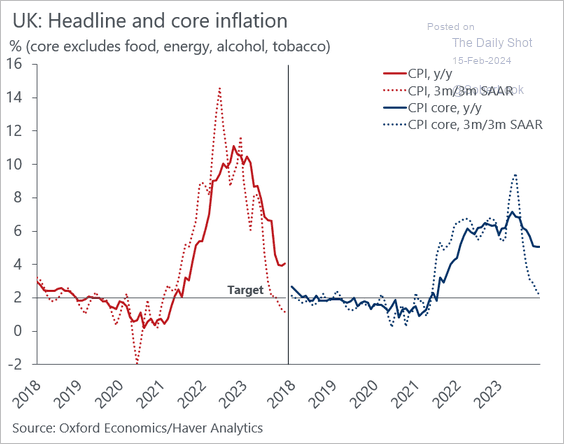 Source: @DanielKral1, @OxfordEconomics
Source: @DanielKral1, @OxfordEconomics
3. The official index of home price appreciation remains in negative territory year-over-year.
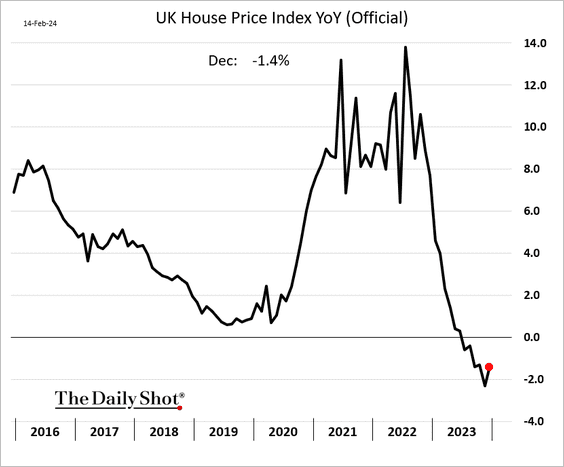
4. As we saw earlier, new employment data shows a tighter labor market.
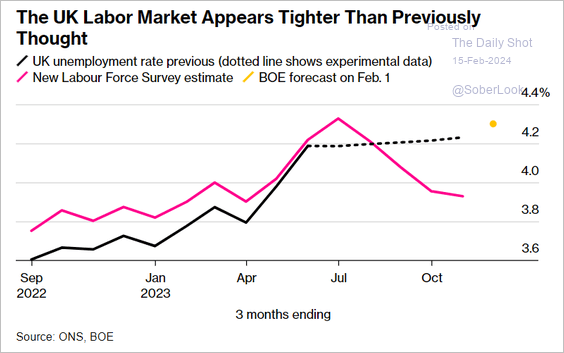 Source: @economics Read full article
Source: @economics Read full article
5. Brexit didn’t hurt London’s derivatives clearing business.
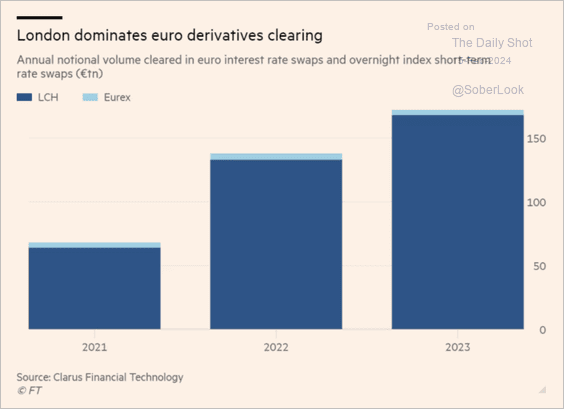 Source: @financialtimes Read full article
Source: @financialtimes Read full article
Back to Index
The Eurozone
1. The euro-area economy managed to avoid a recession.
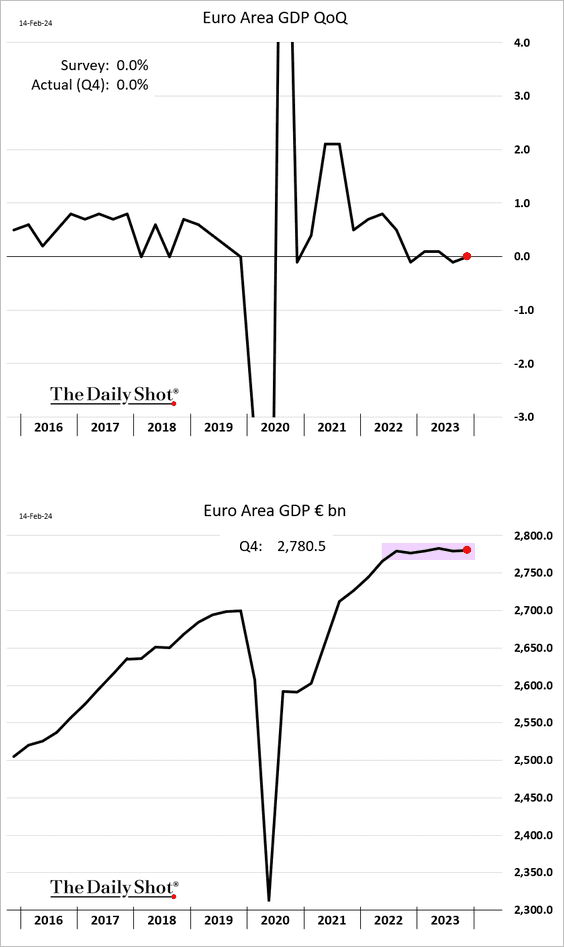
• After three consecutive declines the Dutch economy returned to growth last quarter.
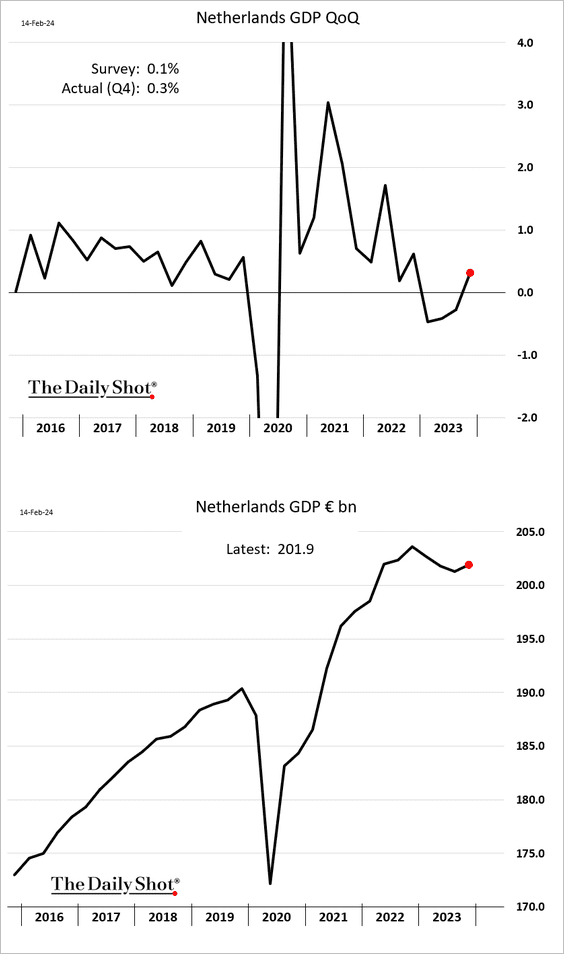
——————–
2. The Eurozone’s industrial production surged in December.
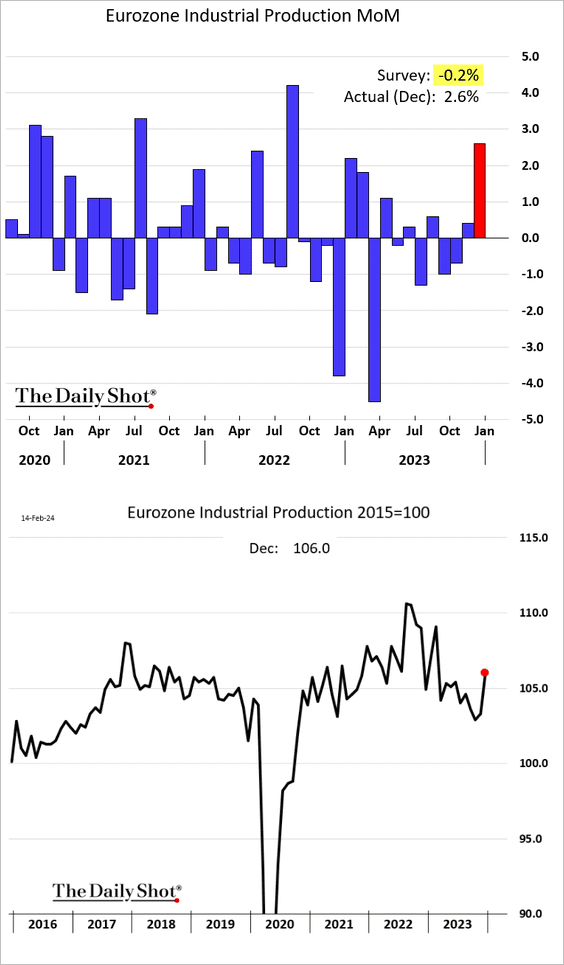
Here is the manufacturing output.
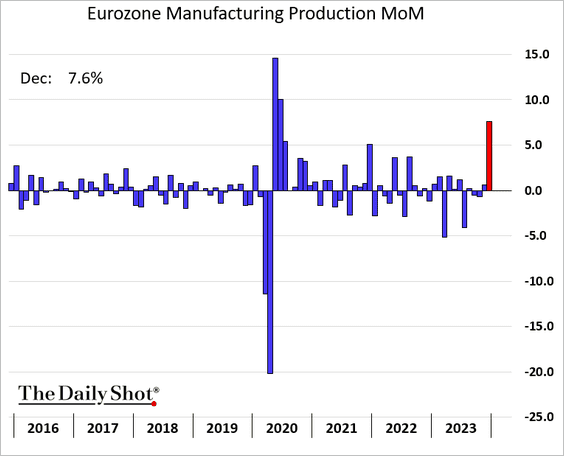
 Source: @WSJ Read full article
Source: @WSJ Read full article
Much of the gain was driven by Ireland, where economic data tends to be lumpy.
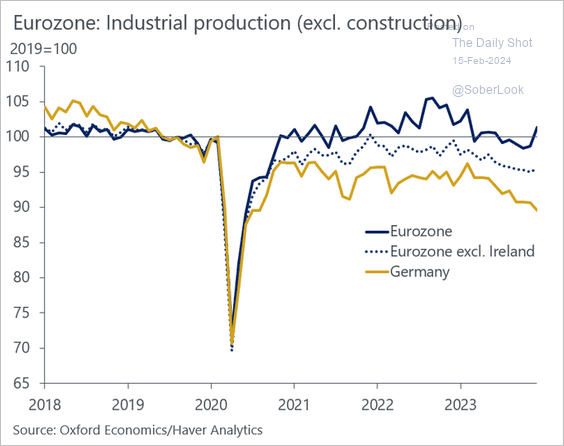 Source: @DanielKral1, @OxfordEconomics
Source: @DanielKral1, @OxfordEconomics
——————–
3. The median estimate for the neutral rate has risen by about 30 basis points compared with levels in mid-2019 before the onset of the pandemic.
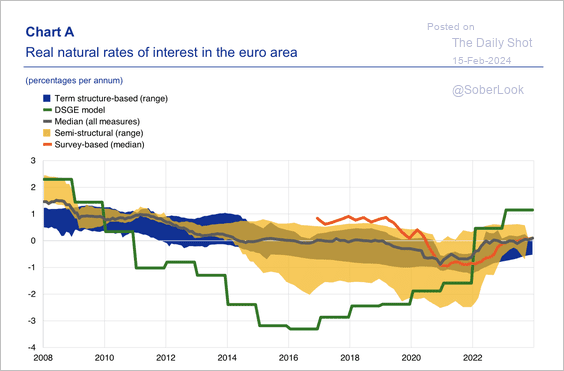 Source: ECB
Source: ECB
Back to Index
Europe
1. Let’s begin with Norway.
• The economy returned to growth in Q4.
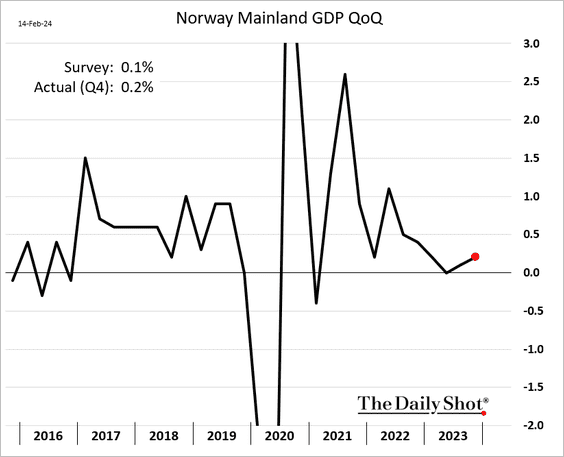
• The decline in Norway’s business confidence and production outlook points to weakness in real GDP.
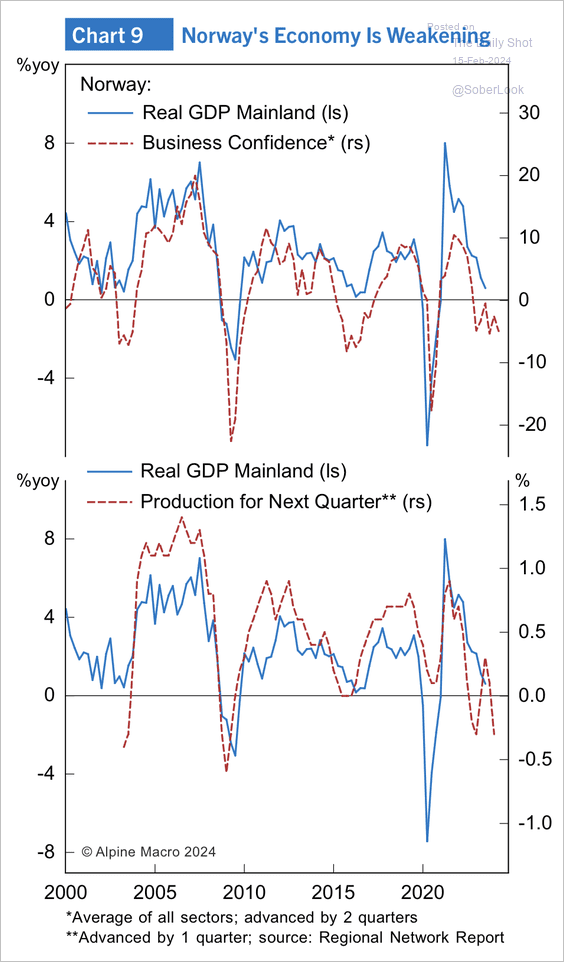 Source: Alpine Macro
Source: Alpine Macro
• A build-up of slack could exert downward pressure on underlying inflation in Norway.
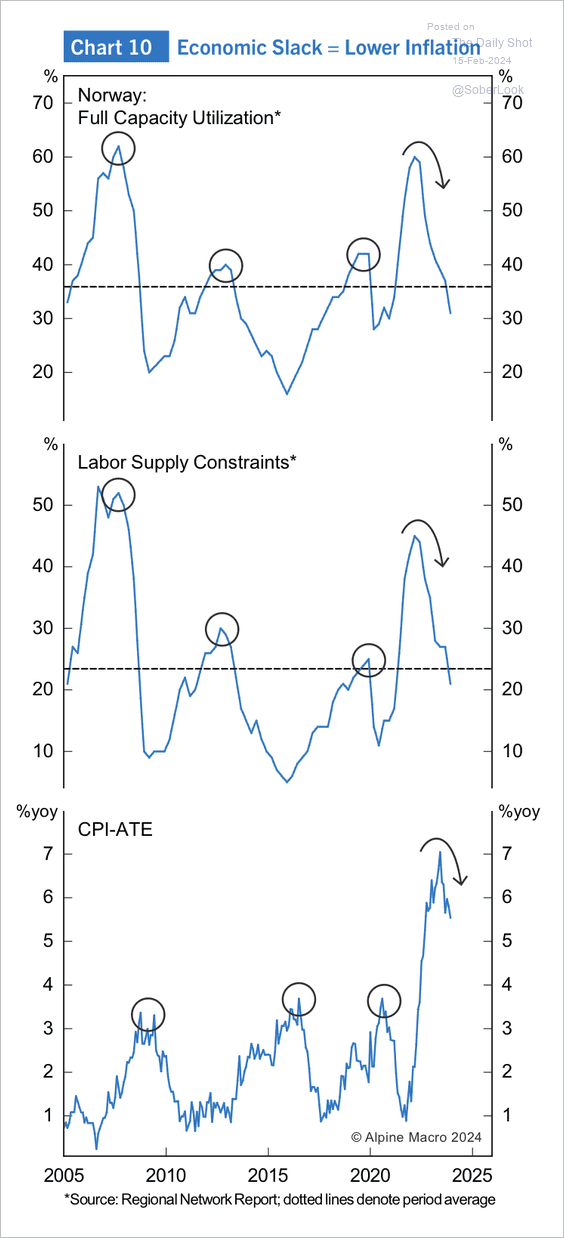 Source: Alpine Macro
Source: Alpine Macro
• EUR/NOK has deviated far above purchasing power parity.
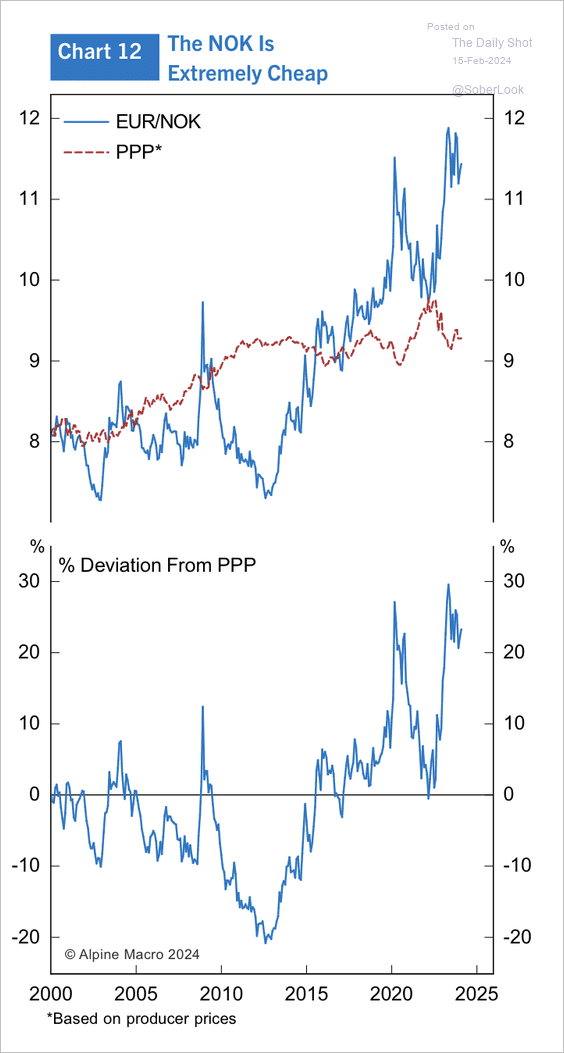 Source: Alpine Macro
Source: Alpine Macro
– EUR/NOK is trading below resistance at its 40-week moving average.
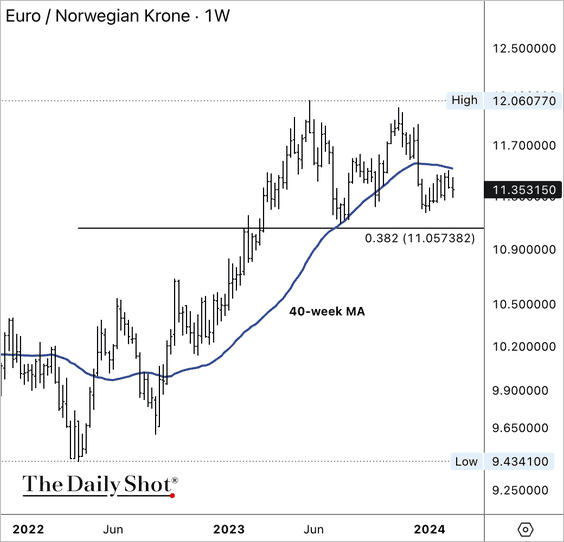
——————–
2. Poland’s economy avoided a contraction last quarter.
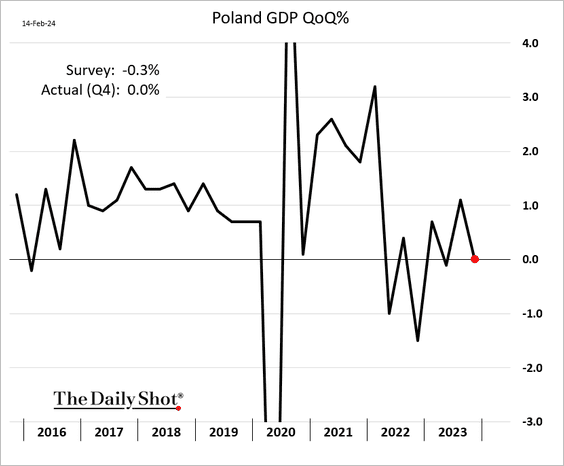
3. Here is a look at inflation for store-bought pizza and quiche in the EU.
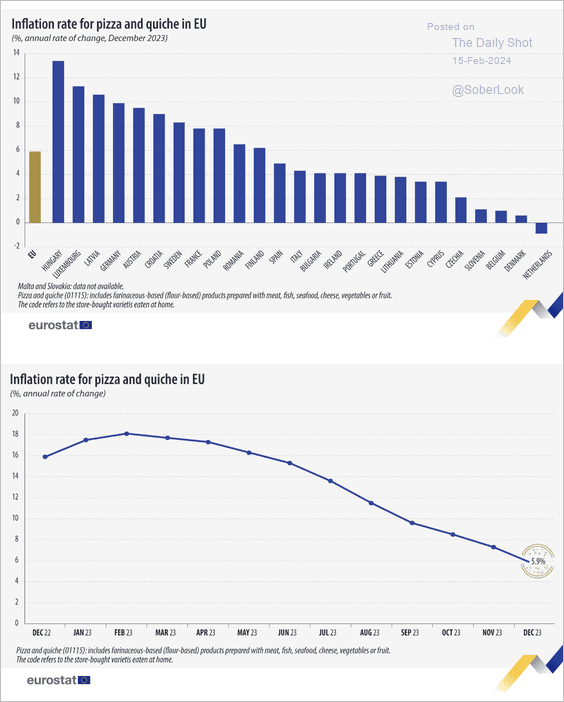 Source: Eurostat Read full article
Source: Eurostat Read full article
Back to Index
Japan
1. The economy unexpectedly slipped into technical recession last quarter, …
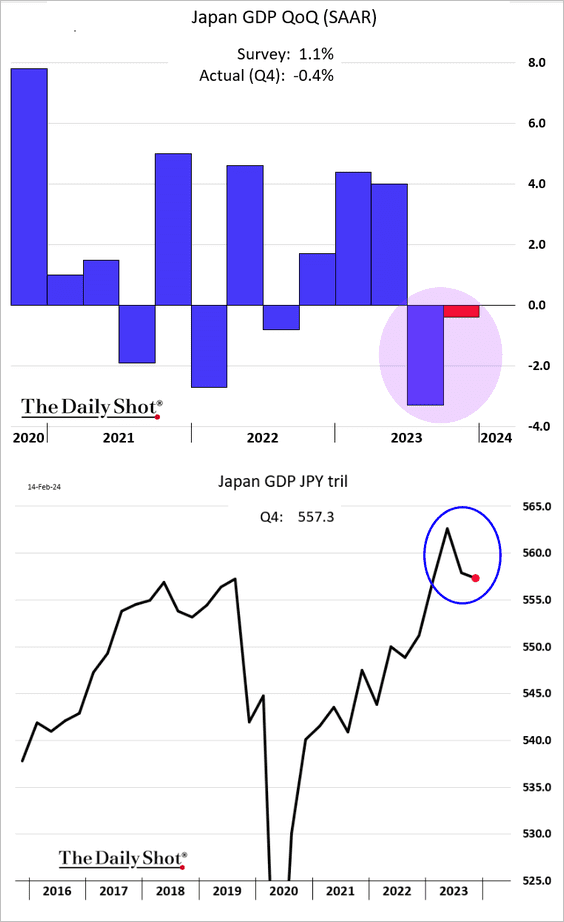
… dragged lower by weak domestic demand (consumer spending and business investment).
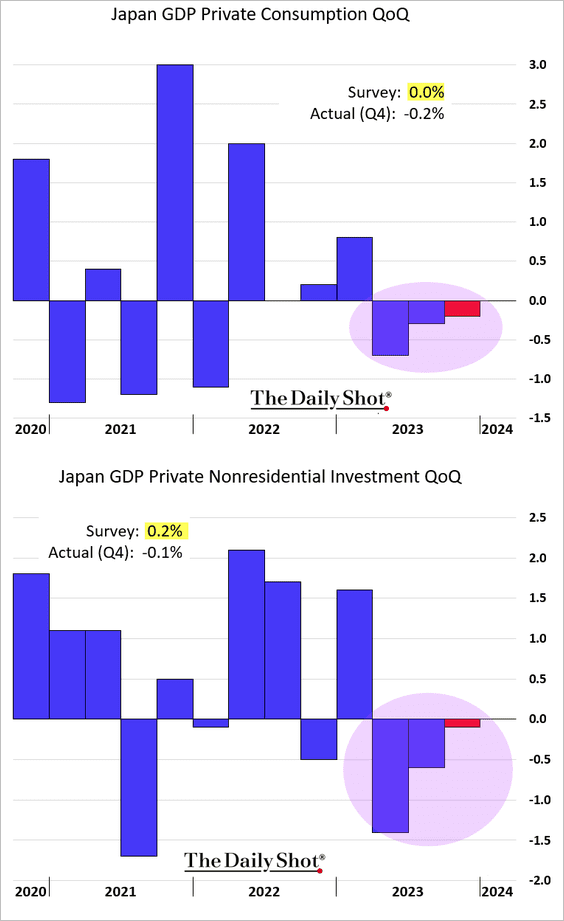
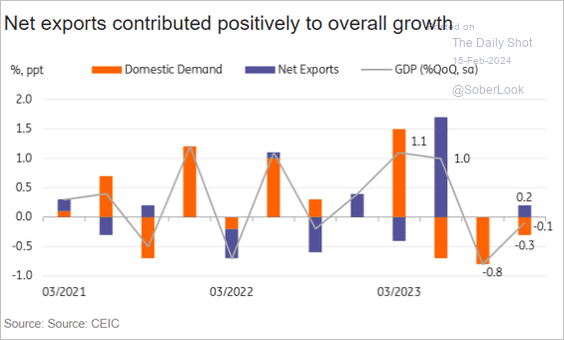 Source: ING
Source: ING
 Source: CNBC Read full article
Source: CNBC Read full article
——————–
2. The authorities are not happy with the weakening of the yen past 150 to the dollar.
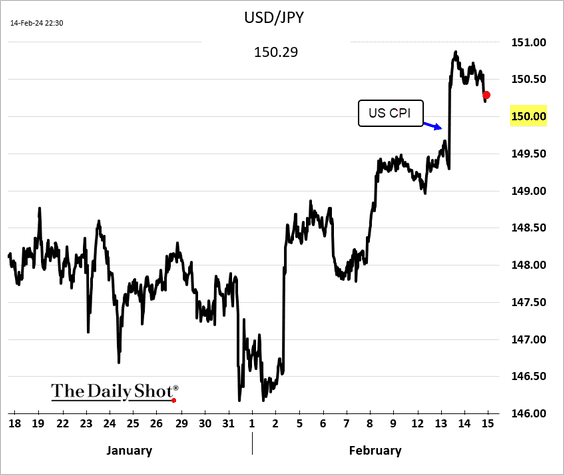
 Source: Reuters Read full article
Source: Reuters Read full article
• Traders are betting on an intervention.
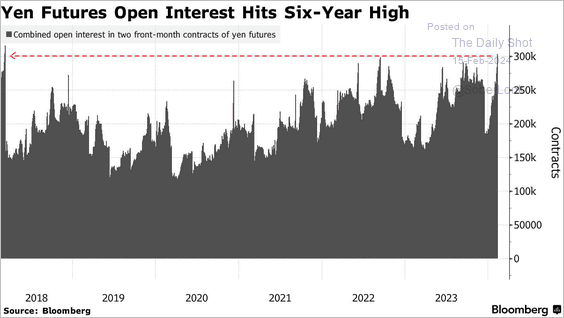 Source: @markets Read full article
Source: @markets Read full article
• Here is the yen trade-weighted index.
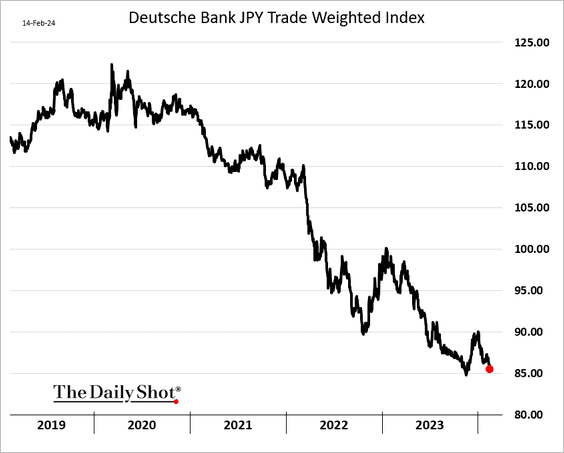
——————–
3. Stocks continue to surge.
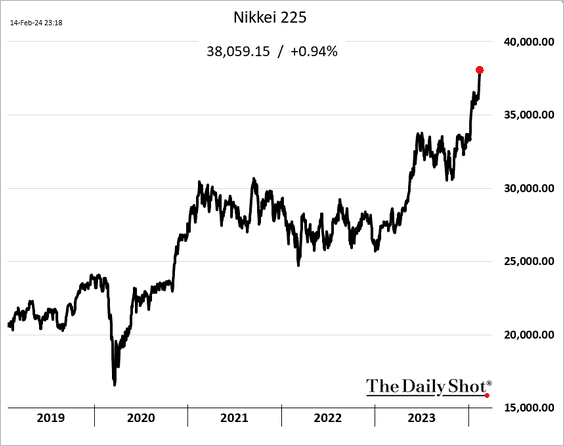
Back to Index
Australia
1. The employment report surprised to the downside again.
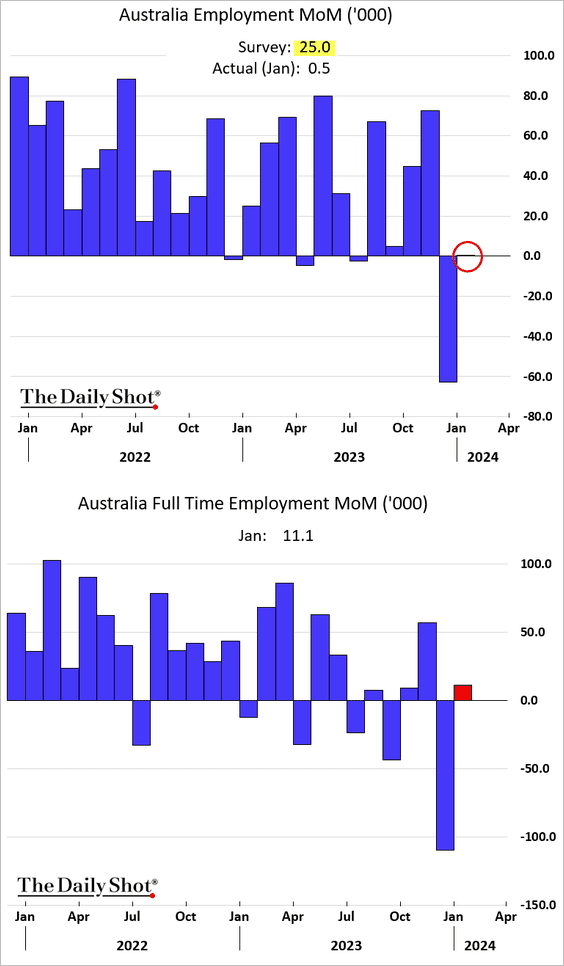
• The unemployment rate climbed …
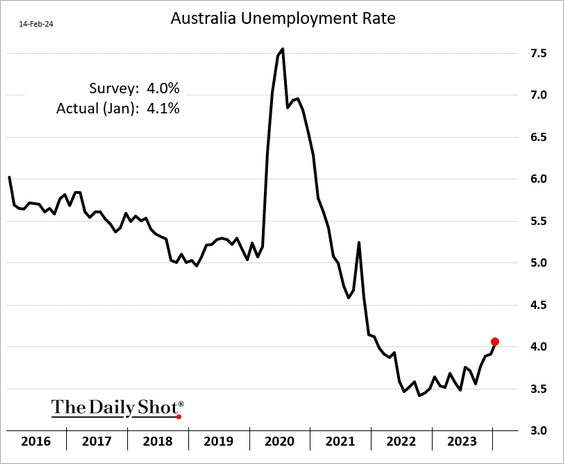
… and may have further to rise.
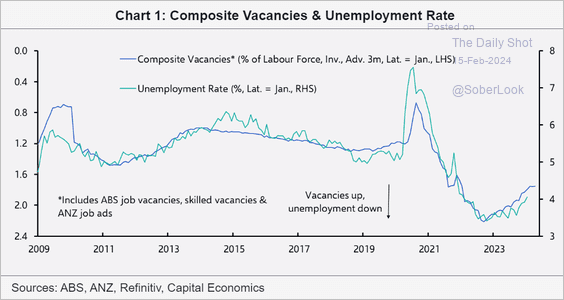 Source: Capital Economics
Source: Capital Economics
• The participation rate edged lower.
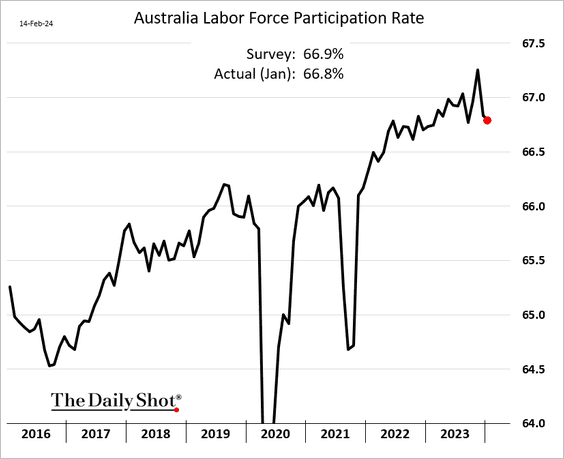
2. Bond yields dropped in response to the soft employment report.
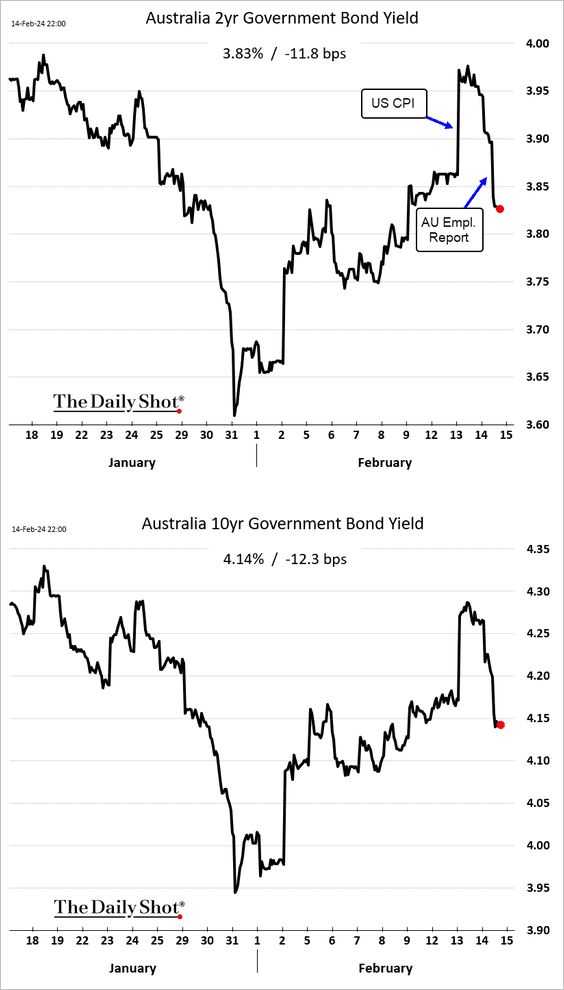
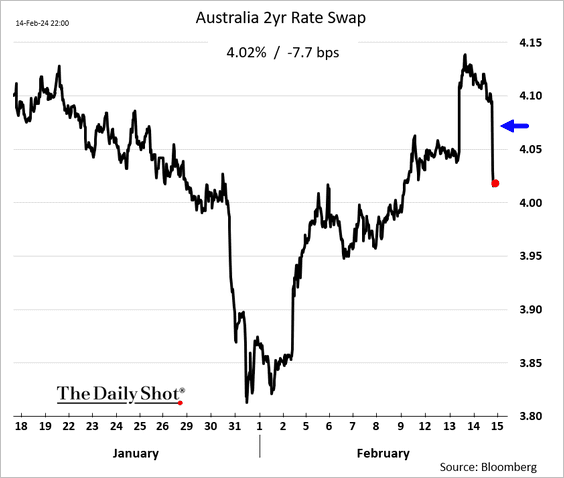
Back to Index
Emerging Markets
1. Argentina’s CPI blasted past 250% last month.
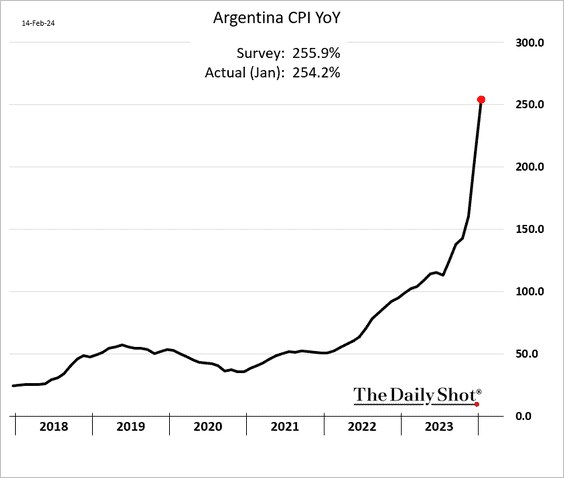
2. Will Banxico wait for the Fed to cut rates?
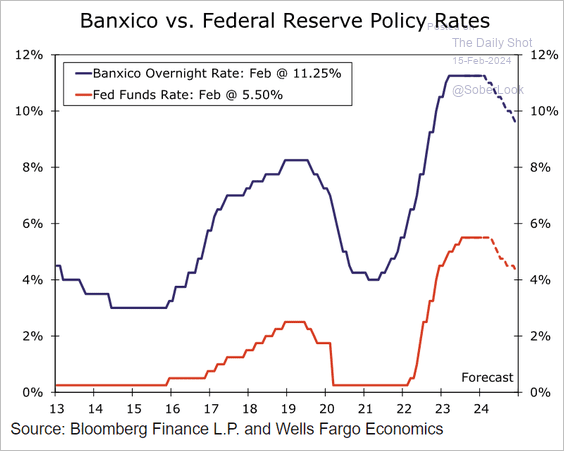 Source: Wells Fargo Securities
Source: Wells Fargo Securities
3. Here is a look at country weights in the MSCI EM Index in 2020 and 2024.
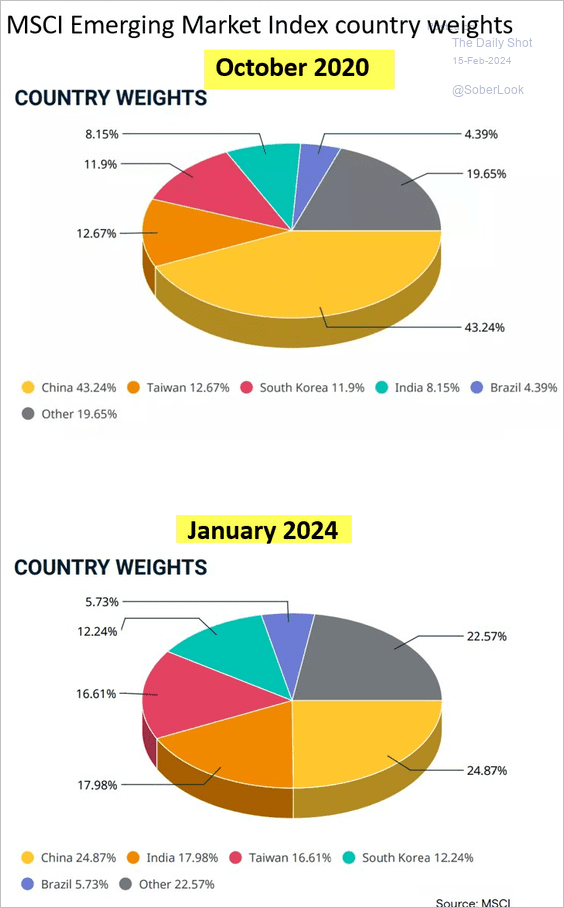 Source: MSCI
Source: MSCI
Back to Index
Cryptocurrency
1. BTC/USD has only spent 125 trading days above $52K. Could we see a new all-time high soon?
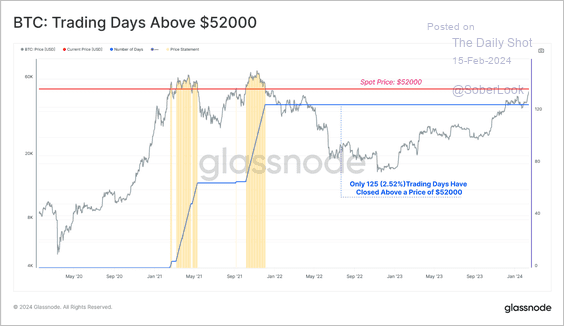 Source: @KaikoData
Source: @KaikoData
2. Open interest in the bitcoin perpetual futures market is rising, suggesting renewed speculative interest among traders.
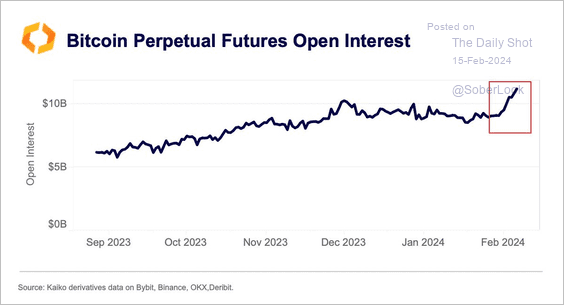 Source: @KaikoData
Source: @KaikoData
3. This table shows US spot-bitcoin ETF flows since the January launch date.
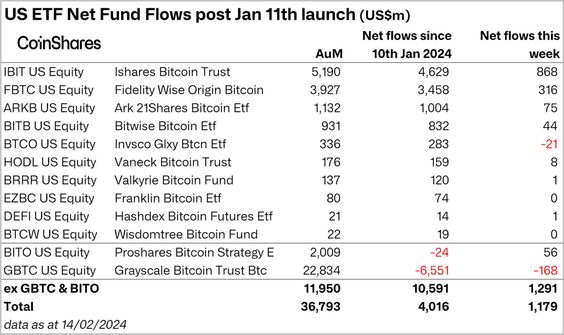 Source: CoinShares
Source: CoinShares
4. Here is a comparison of risk/return metrics for crypto and traditional assets included in a balanced portfolio.
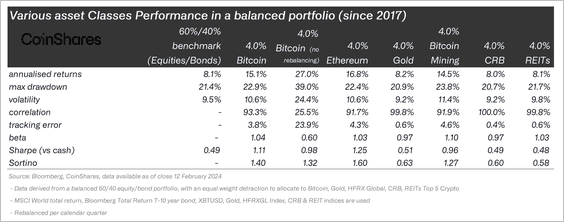 Source: CoinShares Read full article
Source: CoinShares Read full article
Back to Index
Commodities
1. US grain prices continue to sink.
• Bloomberg’s grains index:
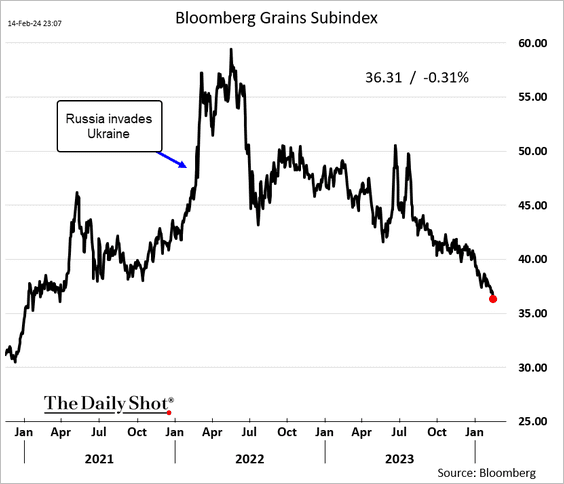
• Soybeans:
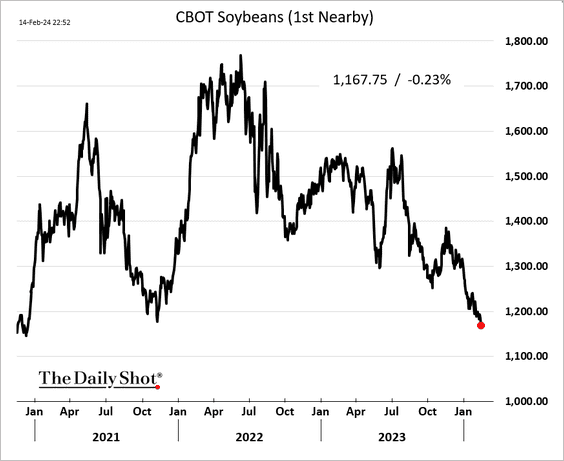
• Soy meal:
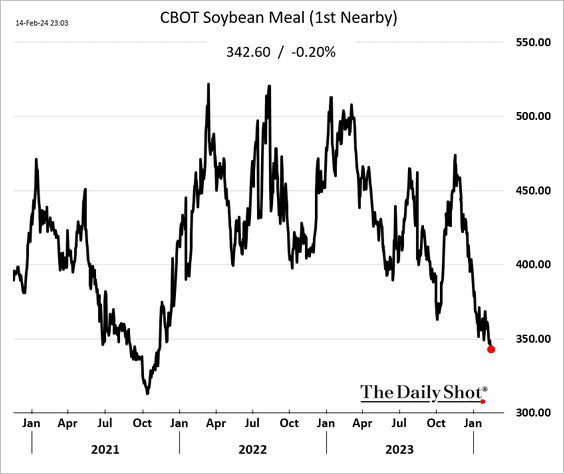
• Corn:
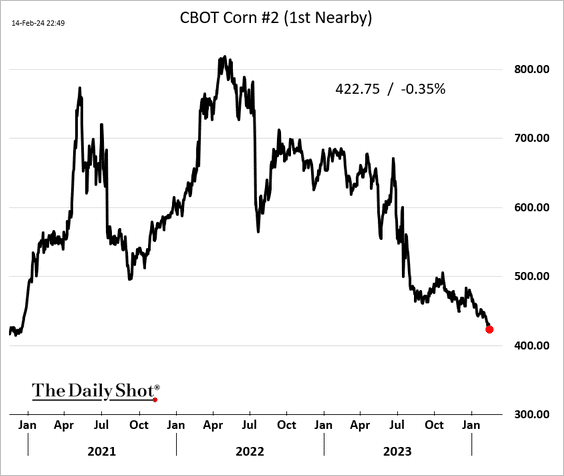
• HRW wheat:
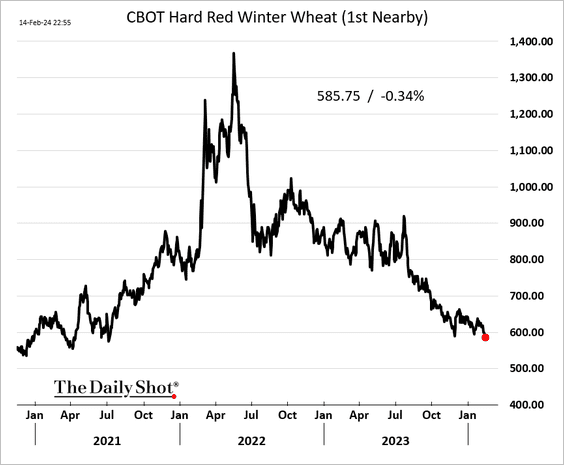
Will we see a pullback in food prices as a result?
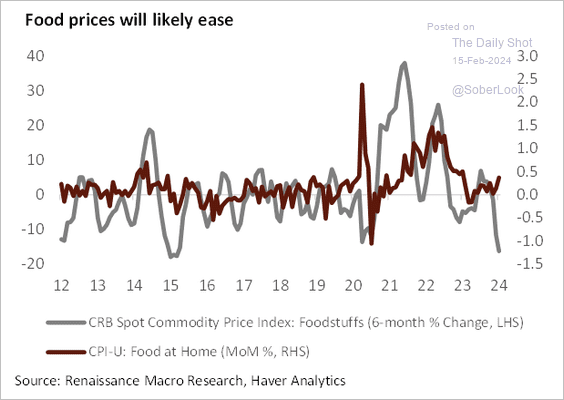 Source: @RenMacLLC
Source: @RenMacLLC
——————–
2. Canola futures are hitting multi-year lows.
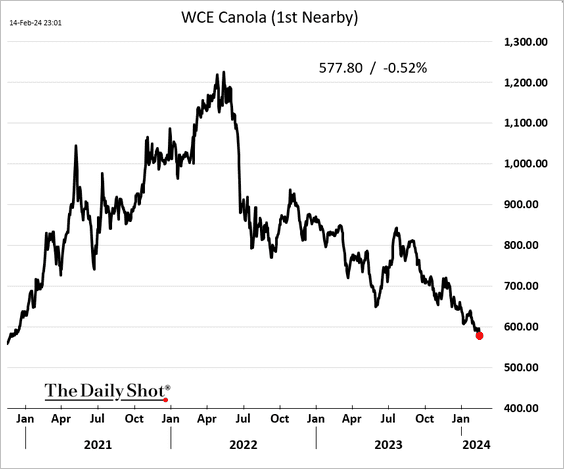
3. US cotton futures are climbing.
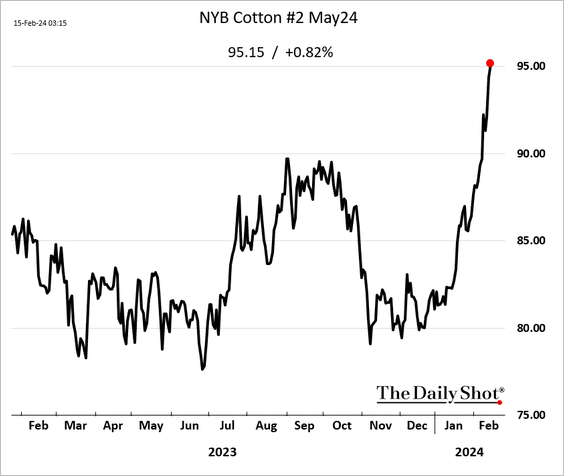
Back to Index
Energy
1. US oil inventories jumped last week, while refined product stockpiles continue to ease.
• Weekly changes:
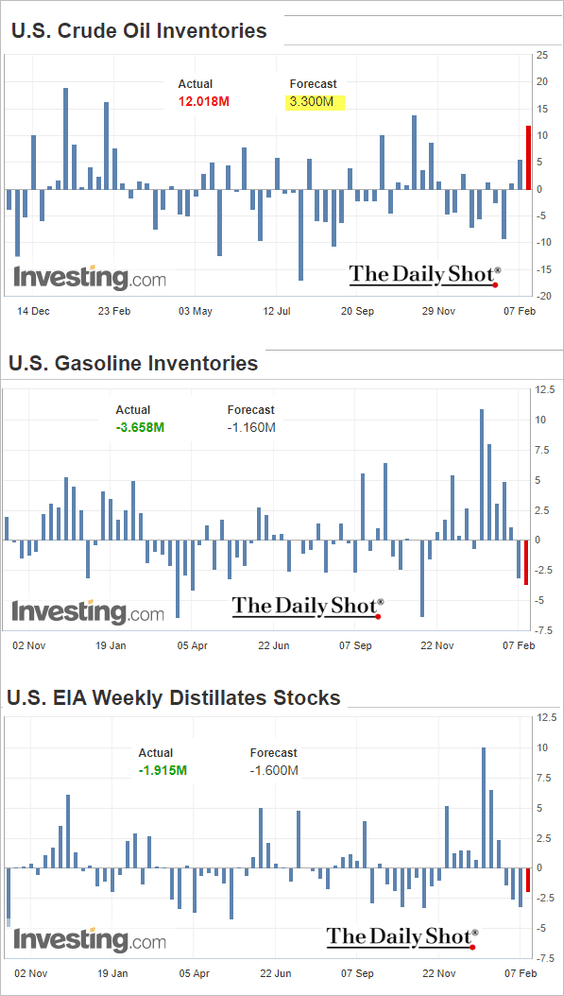
• Inventory levels:
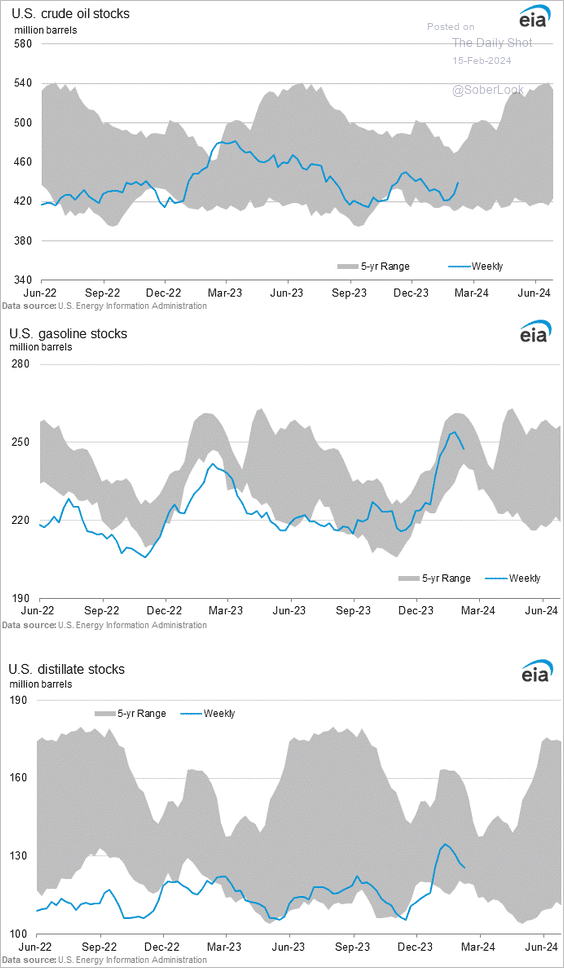
• Oil days of supply:
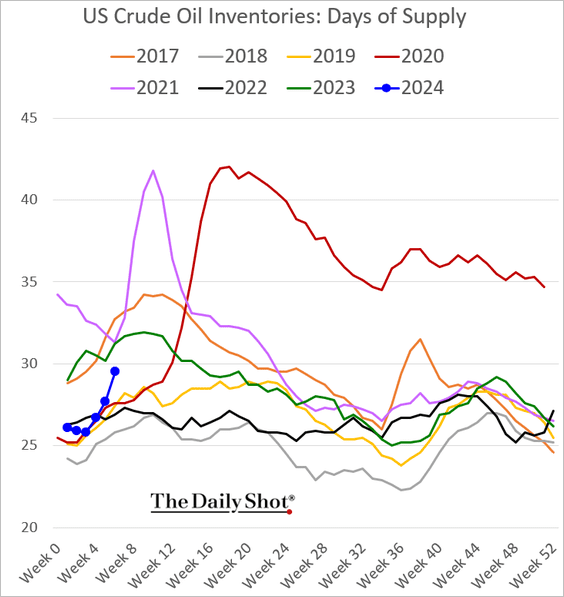
2. Last week saw a further decline in refinery inputs and utilization rates.
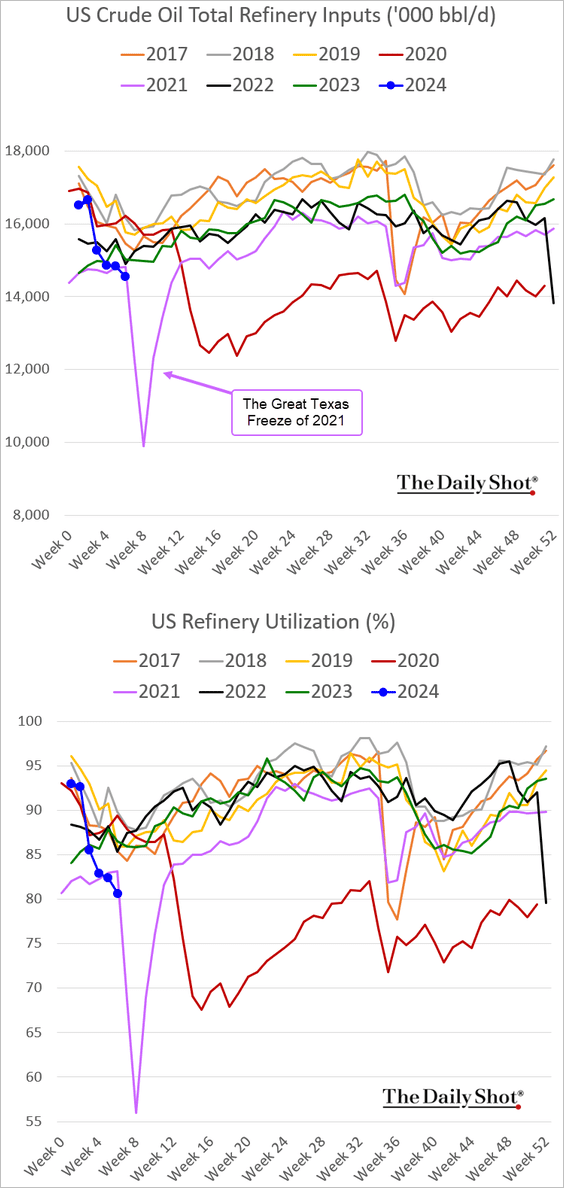
——————–
3. Here is a look at Permian production by company.
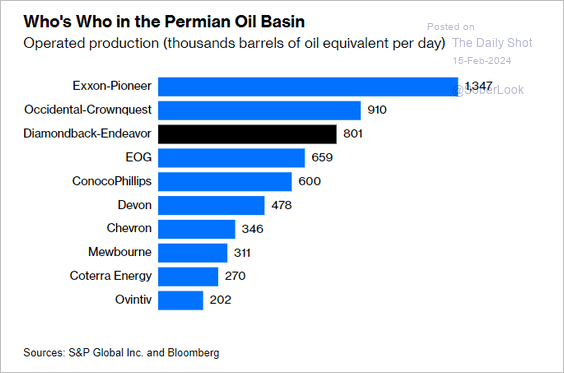 Source: @JavierBlas, @opinion Read full article
Source: @JavierBlas, @opinion Read full article
4. Lower US oil production ahead?
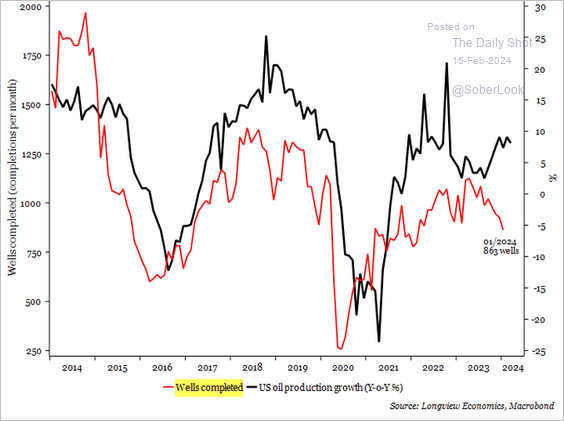 Source: Longview Economics
Source: Longview Economics
5. The US natural gas futures drawdown has been massive.
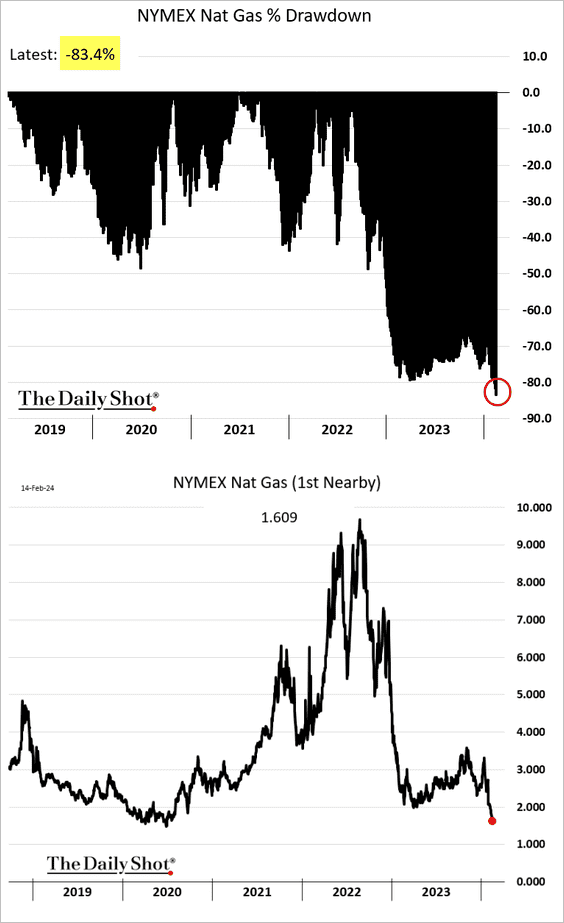
Back to Index
Equities
1. The S&P 500 is entering a seasonally challenging period of the month.
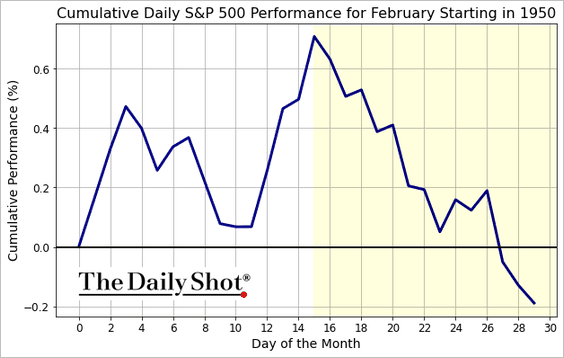 h/t @RyanDetrick
h/t @RyanDetrick
2. The S&P 500 typically rises during election years, especially if the incumbent party wins.
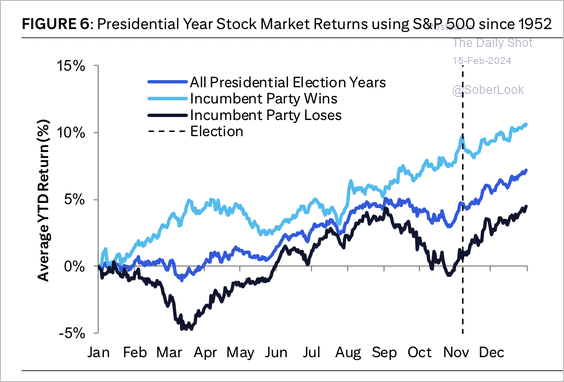 Source: Citi Private Bank
Source: Citi Private Bank
3. As measured by the Cumulative Advance-Decline Line, the breadth of the Nasdaq Composite has remained depressed even as the index surged in recent months.
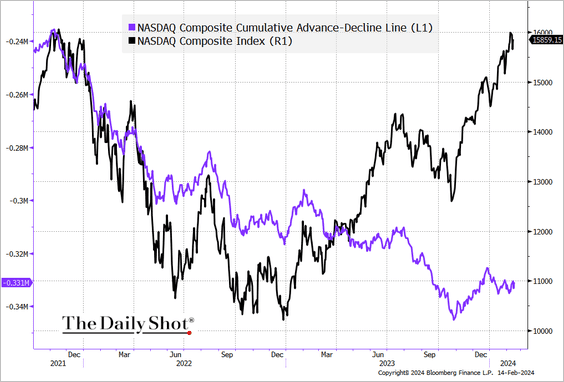 Source: @TheTerminal, Bloomberg Finance L.P.
Source: @TheTerminal, Bloomberg Finance L.P.
4. According to Deutsche Bank, the combined annual profits of the US “Magnificent Seven” stocks surpass those of a wide array of listed securities across all non-US countries, excluding China and Japan.
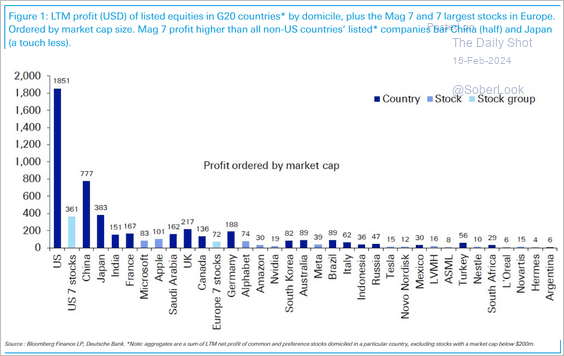 Source: Deutsche Bank Research
Source: Deutsche Bank Research
5. Here is a look at share buybacks vs. dividends for US and European markets (GRANOLAS = GlaxoSmithKline, Roche, ASML, Nestle, Novartis, Novo Nordisk, L’Oreal, LVMH, AstraZeneca, SAP, Sanofi).
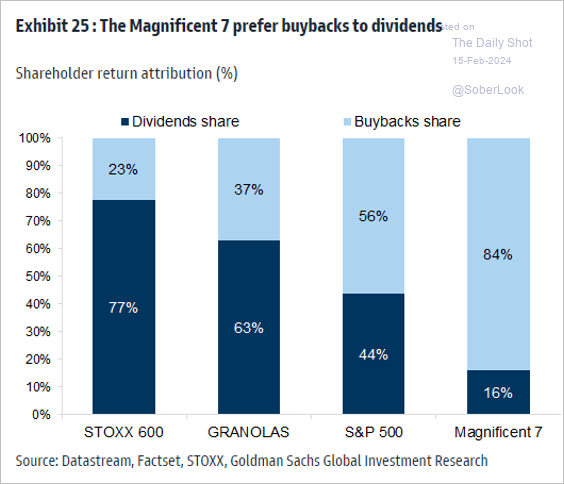 Source: Goldman Sachs; @MikeZaccardi
Source: Goldman Sachs; @MikeZaccardi
6. US shares have widened their outperformance vs. the rest of the world.
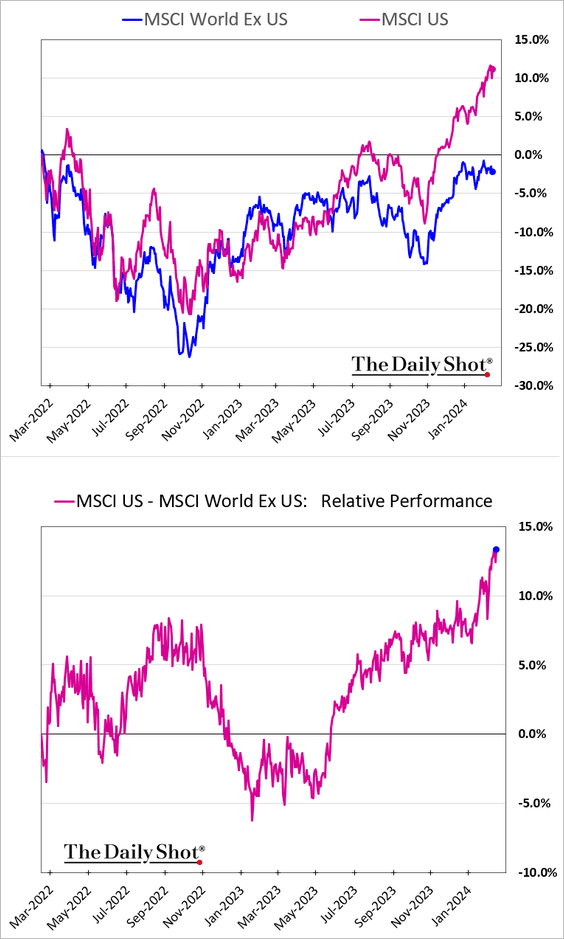
7. The Russell 2000 – S&P 500 implied volatility ratio is at multi-year highs.
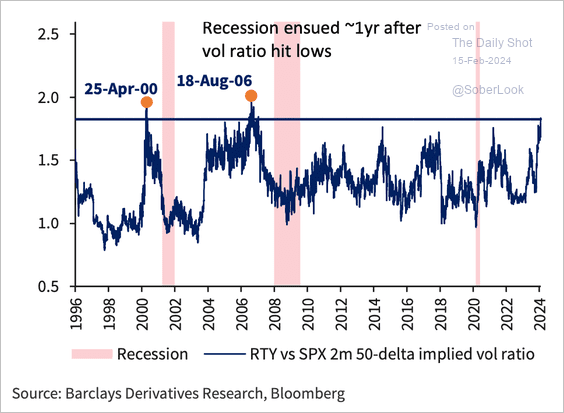 Source: Barclays Derivatives Research; @dailychartbook
Source: Barclays Derivatives Research; @dailychartbook
8. Asset managers are very long US equity futures.
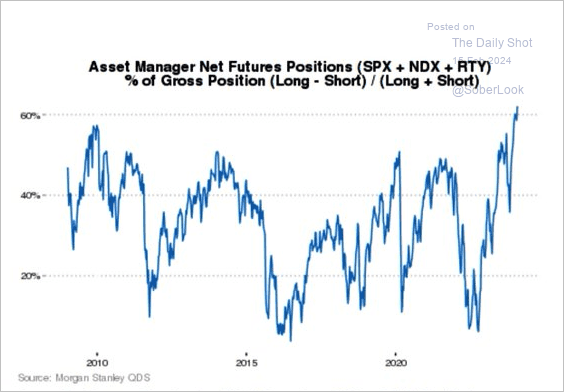 Source: Morgan Stanley Research; @WallStJesus
Source: Morgan Stanley Research; @WallStJesus
9. The beta of hedge funds and mutual funds to the S&P 500 is exceptionally high, potentially exacerbating a downturn in the index.
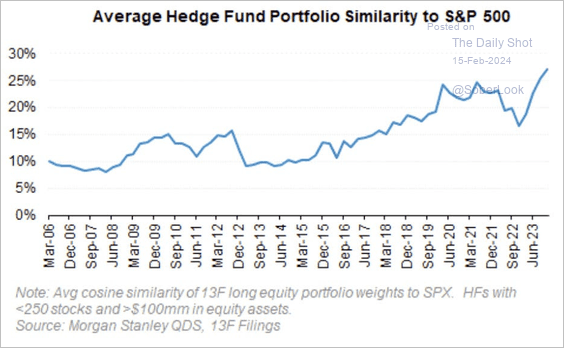 Source: Morgan Stanley Research; @dailychartbook
Source: Morgan Stanley Research; @dailychartbook
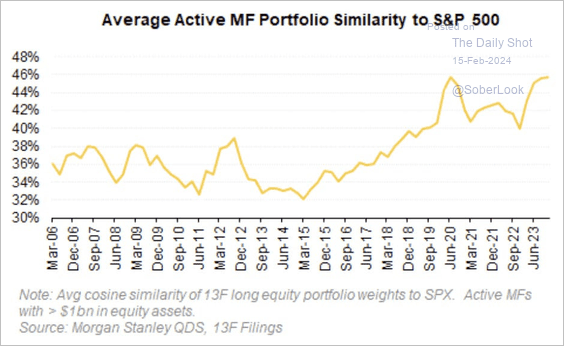 Source: Morgan Stanley Research; @dailychartbook
Source: Morgan Stanley Research; @dailychartbook
Back to Index
Credit
1. Here is a look at large banks’ loan book exposure.
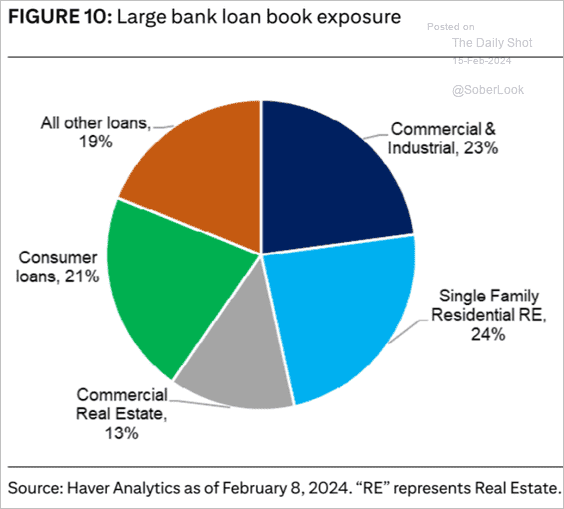 Source: Citi Private Bank
Source: Citi Private Bank
2. Next, we have some updates on commercial real estate.
• Near-term debt maturities:
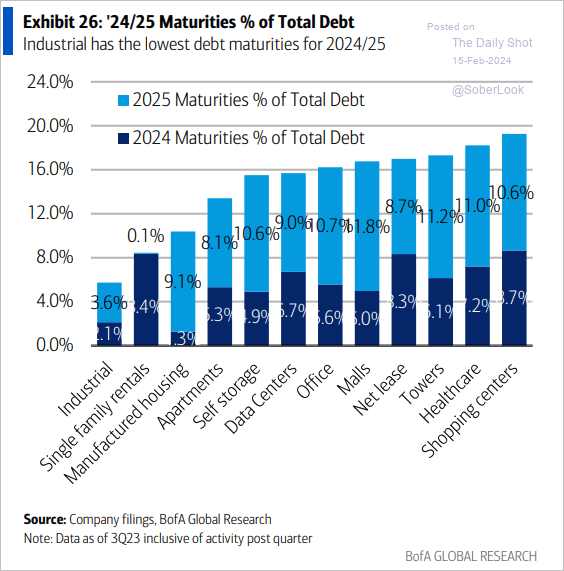 Source: BofA Global Research
Source: BofA Global Research
• Time it would take to absorb current vacancies and under-construction inventory:
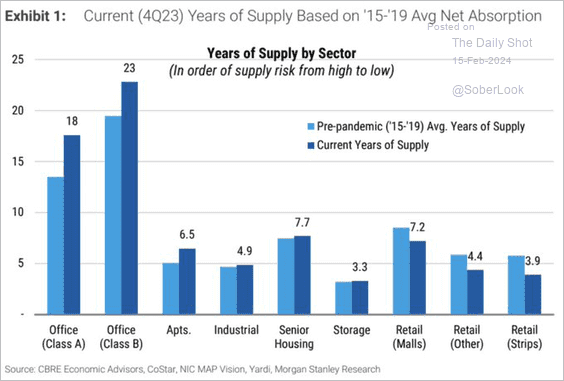 Source: Morgan Stanley Research; @AyeshaTariq
Source: Morgan Stanley Research; @AyeshaTariq
• CMBS interest-only loans:
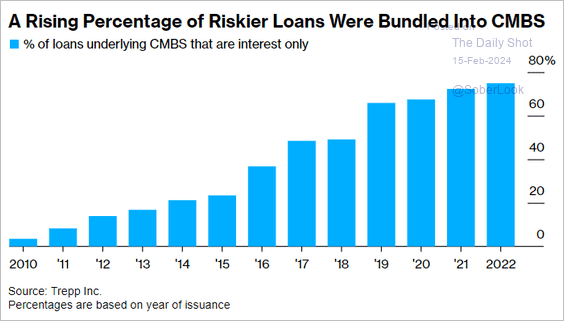 Source: @markets Read full article
Source: @markets Read full article
Back to Index
Global Developments
1. Here is a look at passive and active fund flows.
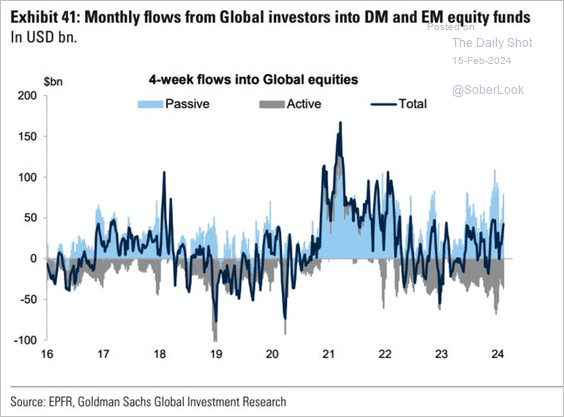 Source: Goldman Sachs; @WallStJesus
Source: Goldman Sachs; @WallStJesus
2. How are various economies performing relative to expectations?
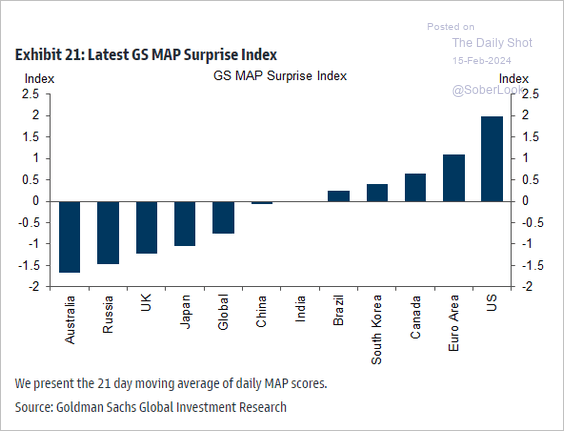 Source: Goldman Sachs; @MikeZaccardi
Source: Goldman Sachs; @MikeZaccardi
3. Investors view the global fiscal policy as too stimulative.
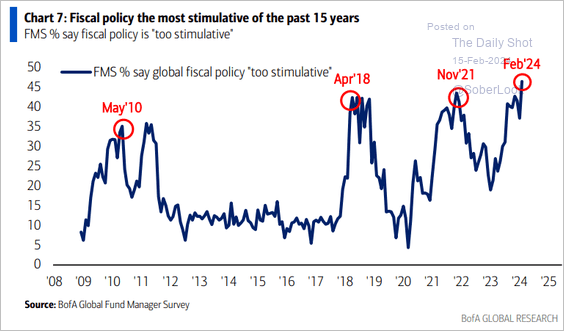 Source: BofA Global Research
Source: BofA Global Research
4. Supply chain bottlenecks continue to be relatively mild.
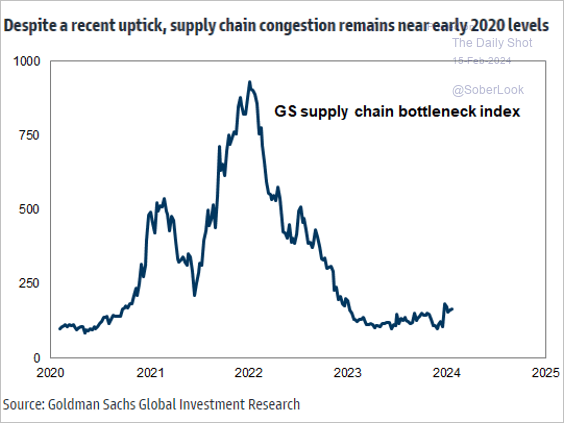 Source: Goldman Sachs; @MikeZaccardi
Source: Goldman Sachs; @MikeZaccardi
——————–
Food for Thought
1. Nvidia bubble?
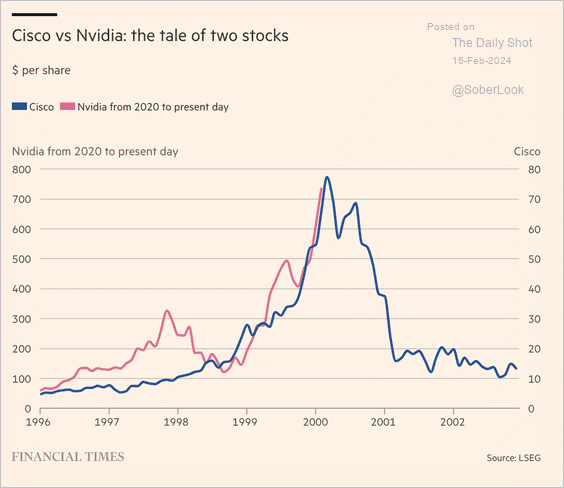 Source: @financialtimes Read full article
Source: @financialtimes Read full article
2. EV market share in the US:
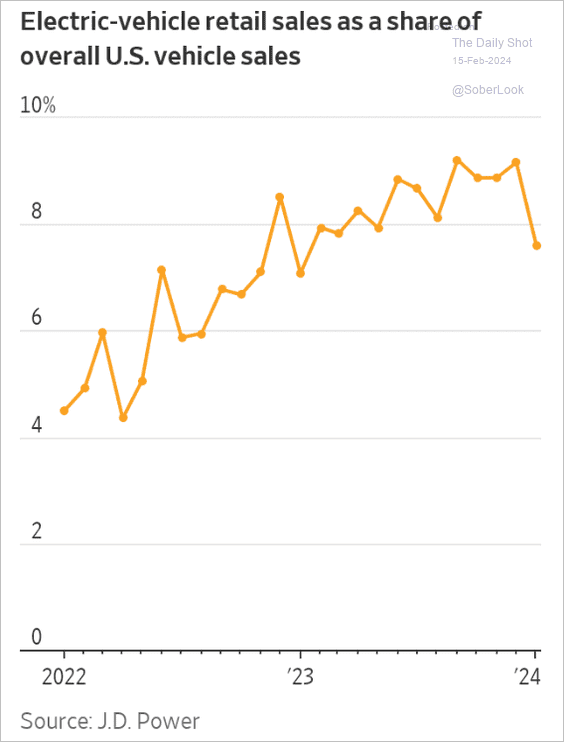 Source: @WSJ Read full article
Source: @WSJ Read full article
• EV prices:
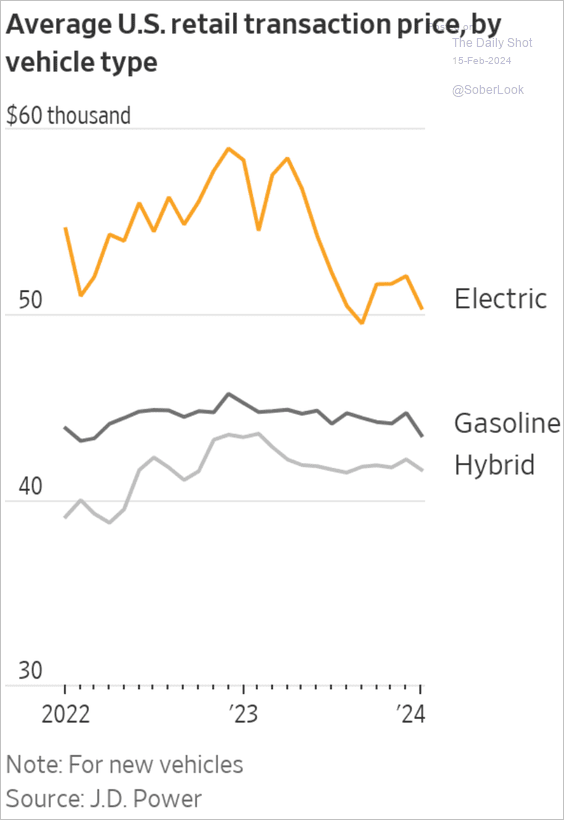 Source: @WSJ Read full article
Source: @WSJ Read full article
——————–
3. Largest semiconductor foundry companies:
![]() Source: Visual Capitalist Read full article
Source: Visual Capitalist Read full article
4. Teacher qualifications in OECD countries (upper secondary education):
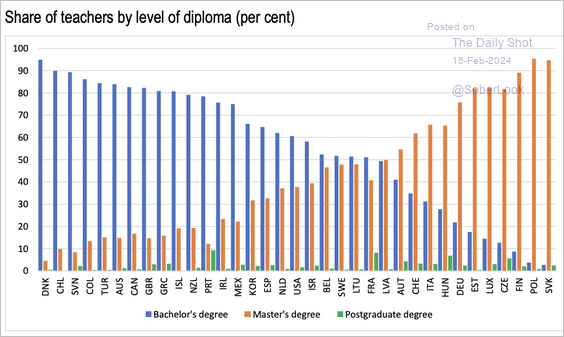 Source: OECD
Source: OECD
5. Naval fleets:
 Source: The Economist Read full article
Source: The Economist Read full article
• Navy battle force ships:
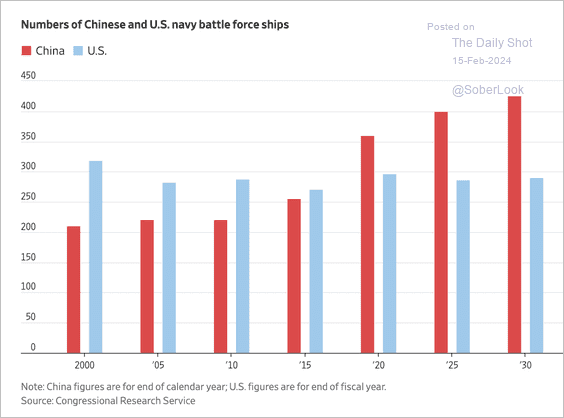 Source: @WSJ Read full article
Source: @WSJ Read full article
——————–
6. Cancer rates among younger adults:
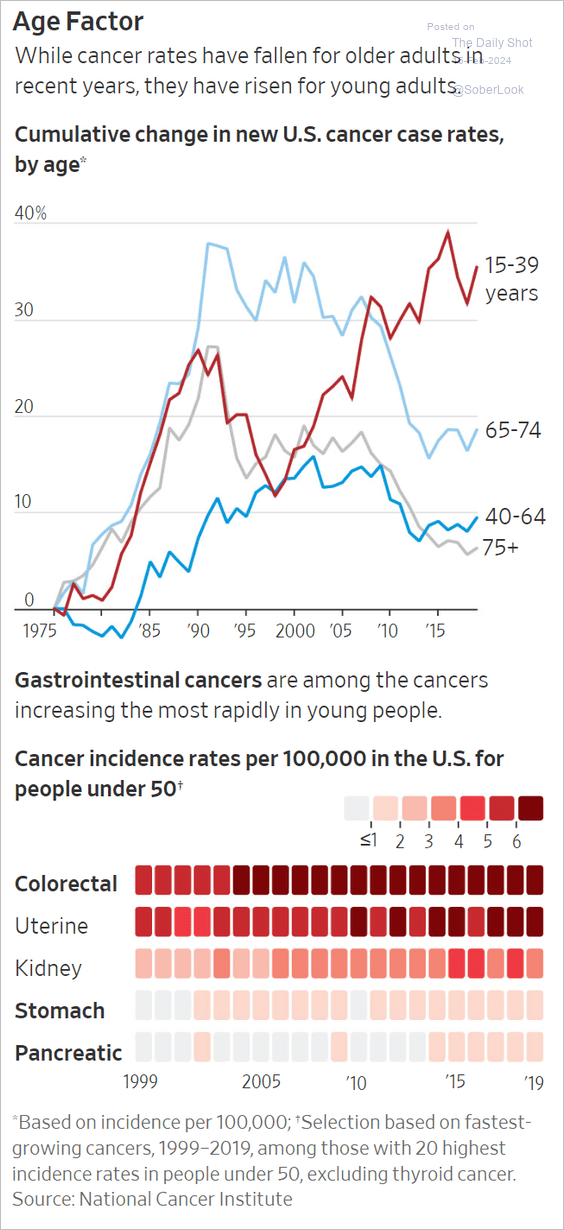 Source: @WSJ Read full article
Source: @WSJ Read full article
7. 2024 US Super Bowl ticket price inflation versus prior years:
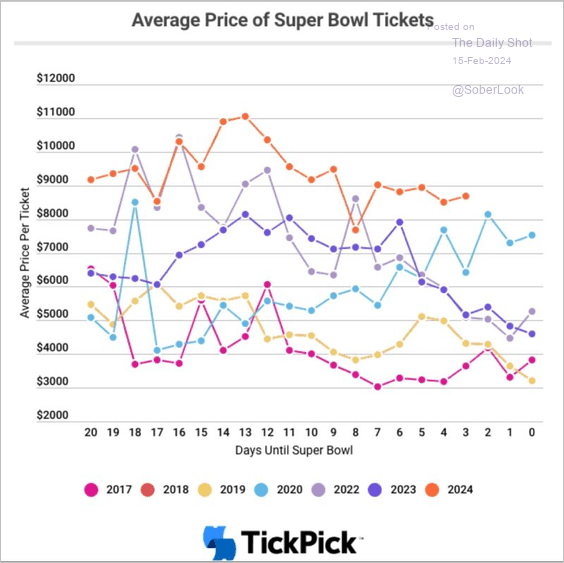 Source: TickPick
Source: TickPick
• Super Bowl wins by team:
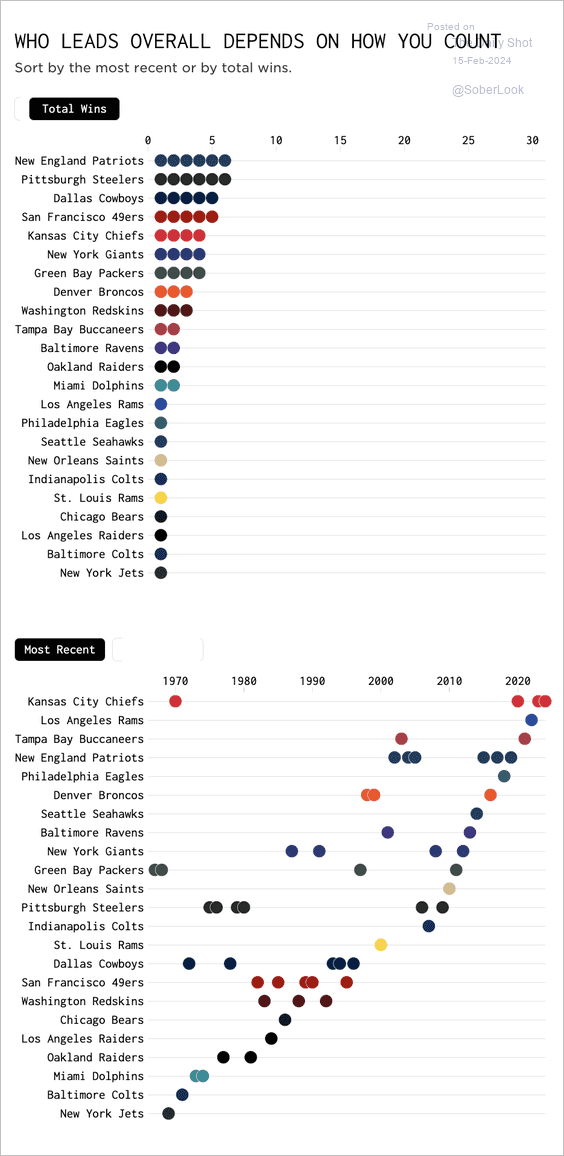 Source: FlowingData Read full article
Source: FlowingData Read full article
——————–
Back to Index
